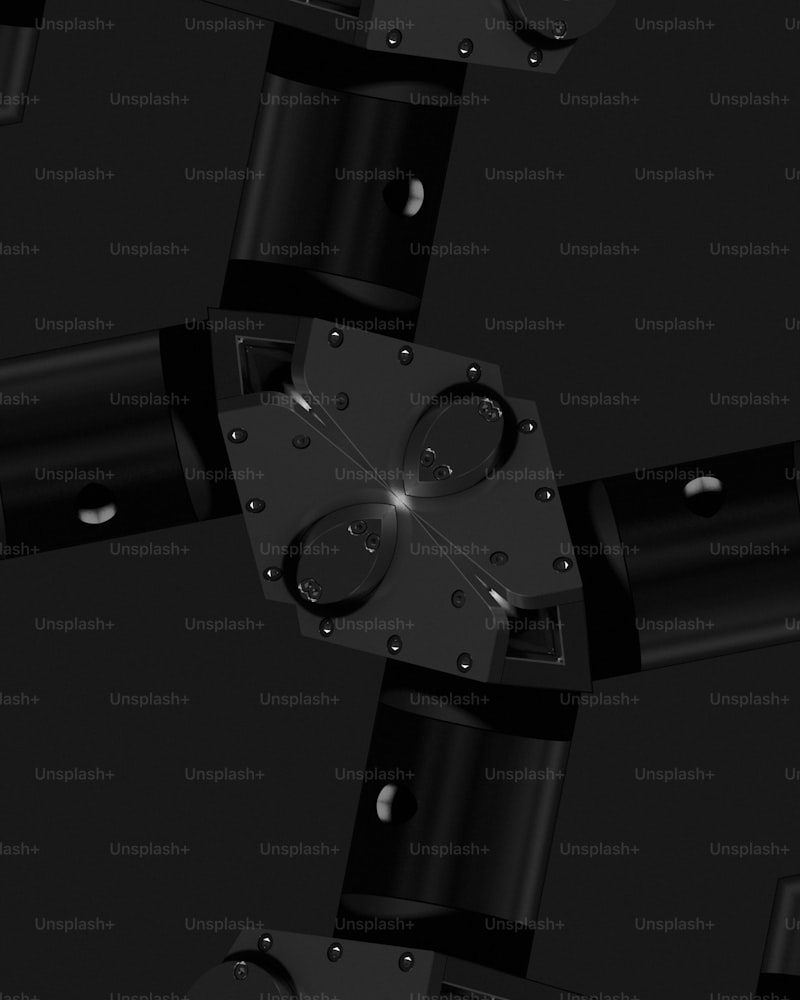Firstly, identify the symptoms of a worn-out timing chain. You may notice engine misfires, rough idling, or even strange metallic sounds emanating from the engine bay. These signs often indicate that the timing chain needs attention.
Begin by gathering the necessary tools and parts. You’ll typically need a socket set, a torque wrench, new timing chain kit with tensioners and guides, gaskets, and possibly a harmonic balancer puller depending on your vehicle model.
Next, prepare the vehicle by disconnecting the battery and removing any components obstructing access to the timing chain cover. This might include the serpentine belt, cooling fan, and other parts depending on your vehicle’s layout.
Carefully remove the timing chain cover to expose the old timing chain. Take note of the chain’s orientation and the alignment marks on the camshaft and crankshaft sprockets.
Once exposed, remove the old timing chain and inspect the chain, sprockets, and guides for wear. Clean the area thoroughly to ensure no debris enters the engine.
Install the new timing chain by following the manufacturer’s instructions included in the kit. Ensure proper alignment of the timing marks on the sprockets and tensioners. Torque all bolts to the specified settings to prevent any issues in the future.
After installation, reassemble the components in reverse order of disassembly. Double-check all connections and fittings before reconnecting the battery.
Finally, start the engine and listen for any abnormal noises. Monitor the engine for a few minutes to ensure everything is functioning correctly.
Repairing a worn-out timing chain is a meticulous task that requires attention to detail. By following these steps and using quality replacement parts, you can restore your vehicle’s engine performance and reliability effectively.
Complete Guide: Repairing a Car’s Worn-out Timing Chain
When the timing chain wears out, symptoms such as engine misfires, rough idling, or rattling noises from the engine compartment may occur. Ignoring these signs can lead to more severe engine damage, including valve and piston collisions, which are costly to repair.
To begin repairing a worn-out timing chain, first, it’s essential to diagnose the issue accurately. A mechanic will typically perform a thorough inspection of the timing chain, tensioners, guides, and sprockets to assess the extent of wear and any related damage.
Next, the repair process involves removing the engine’s front cover or timing chain cover to access the timing chain components. Careful attention is given to replace not only the timing chain but also the tensioners and guides if they show signs of wear or damage. This comprehensive approach ensures that the entire timing chain system is restored to optimal working condition.
During the repair, mechanics must follow manufacturer specifications and use high-quality replacement parts to guarantee durability and reliability. Proper tensioning of the timing chain is critical to prevent premature wear and maintain precise engine timing.
Repairing a car’s worn-out timing chain demands expertise and attention to detail. By addressing the issue promptly and using quality replacement parts, drivers can restore their vehicle’s engine performance and reliability, ensuring smooth operation for miles to come.
DIY Automotive: Fixing Your Car’s Timing Chain Wear
Is your car making unusual rattling noises from the engine? It could be a sign of worn timing chain components. Addressing timing chain wear promptly is crucial to prevent engine damage and maintain performance. Fortunately, with some DIY automotive skills and the right tools, you can tackle this issue yourself.
Timing chains are vital components in your engine that synchronize the rotation of the crankshaft and camshaft. Over time, they can stretch or wear out due to high mileage, lack of lubrication, or poor maintenance. Symptoms of timing chain wear include engine misfires, rough idling, and difficulty starting the car.
To diagnose timing chain wear, listen for rattling sounds from the engine bay when the car is running. Once confirmed, replacing the timing chain involves several steps. First, ensure you have a service manual for your specific vehicle model to understand the procedure thoroughly. Then, gather the necessary tools such as a socket wrench set, torque wrench, and a timing chain kit.
Begin by disconnecting the battery and removing the engine covers to access the timing chain components. Mark the positions of the camshaft and crankshaft before removing the old timing chain to ensure proper alignment during reassembly. Clean the engine surfaces and install the new timing chain according to the manufacturer’s specifications.
Completing this DIY repair requires patience and attention to detail. It’s akin to performing surgery on your car’s heart, where precision is key to ensuring the engine runs smoothly afterward. Remember to check other related components like tensioners and guides for wear and replace them if necessary to prevent future issues.

By addressing timing chain wear proactively, you not only save on repair costs but also extend the life of your vehicle. DIY automotive enthusiasts find satisfaction in mastering such repairs, turning a daunting task into a rewarding accomplishment.
Step-by-Step: Overhauling a Worn Timing Chain in Your Vehicle
Begin by assessing the symptoms of a worn timing chain, such as engine misfires, rattling noises from the engine bay, or a check engine light indicating timing issues. Once confirmed, gather the necessary tools including a socket set, torque wrench, and a new timing chain kit specific to your vehicle model.
Start by disconnecting the negative terminal of the battery for safety. Depending on your vehicle, you may need to remove components like the engine cover, air intake manifold, or accessories obstructing access to the timing chain cover. Carefully follow your vehicle’s service manual instructions to avoid damaging any components.
With access gained, loosen the tensioner and remove the old timing chain. Clean the area thoroughly to remove any debris. Install the new timing chain according to the manufacturer’s specifications, ensuring proper alignment of the timing marks on the camshaft and crankshaft gears.
After installing the new chain, tension it according to the manufacturer’s guidelines using the tensioner tool provided in the kit. Rotate the engine manually several times to ensure the chain operates smoothly without any binding or slack. Recheck the timing marks to verify correct installation.
Once satisfied with the installation, reassemble the components in reverse order of disassembly. Double-check all connections and fittings. Reconnect the battery and start the engine to verify proper operation. Listen for any abnormal noises and monitor for any warning lights on the dashboard.
Overhauling a worn timing chain requires patience, attention to detail, and adherence to manufacturer specifications. By following these steps meticulously, you can restore optimal engine performance and reliability, ensuring your vehicle runs smoothly for miles to come.
Essential Tools and Tips for Timing Chain Replacement
Thinking about replacing your timing chain? It’s a crucial task that ensures your engine runs smoothly and efficiently. But before you dive in, it’s essential to gather the right tools and know-how to get the job done right the first time.
First things first, the tools. You’ll need a reliable set of socket wrenches, torque wrench, and a breaker bar to start with. These are your essentials, helping you tackle bolts and nuts of various sizes with ease. Additionally, having a set of screwdrivers, pliers, and a magnetic pickup tool can be lifesavers when dealing with tight spaces and dropped parts.
Next up, the parts. It’s wise to replace not just the timing chain but also the tensioner and guides to ensure everything works together seamlessly. Check your vehicle’s manual for specifications on the exact parts needed for your model.
Preparation is key. Before beginning, make sure your engine is cool to the touch and disconnect the battery to avoid any electrical mishaps. Lay out your tools in an organized manner and keep track of each step to avoid confusion later on.
Now, onto the process. Start by removing the necessary components to access the timing chain cover. This may involve removing the serpentine belt, valve covers, and any other obstructing parts. Once exposed, take your time to inspect the current chain and components for wear or damage.
When installing the new chain, ensure it’s aligned correctly with the marks on the camshaft and crankshaft gears. Use your torque wrench to tighten bolts to the manufacturer’s specifications, preventing over-tightening which can lead to future issues.
Finally, after assembly, double-check everything. Rotate the engine by hand a few times to ensure the chain moves smoothly and doesn’t bind. Reinstall any remaining components and reconnect the battery. Start the engine and listen for any unusual noises or vibrations.
By following these tips and using the right tools, you can successfully replace your timing chain and keep your engine running smoothly for miles to come. Ready to tackle the job? Get started and enjoy the satisfaction of a job well done!
Expert Advice: Restoring a Worn Timing Chain Like a Pro

Ever wondered how to restore a worn timing chain like a pro? Timing chains are crucial components in your engine, responsible for synchronizing the rotation of the crankshaft and camshaft. Over time, they can wear out, leading to issues like engine misfires and reduced performance. However, replacing a timing chain can be costly and time-consuming.
Experts suggest that restoring a worn timing chain involves several key steps. Firstly, diagnosing the extent of wear is crucial. This can be done through careful inspection and, if necessary, using specialized tools to measure chain stretch. Understanding the degree of wear helps in deciding whether restoration is feasible or if replacement is unavoidable.
Once the decision to restore is made, the process typically involves cleaning the chain thoroughly to remove debris and old lubricants that could exacerbate wear. Next, applying a high-quality lubricant designed for timing chains helps reduce friction and prolongs the chain’s life. Some experts even recommend additives that can improve flexibility and reduce noise.
Proper tensioning is another critical aspect of chain restoration. Ensuring the chain is correctly tensioned according to manufacturer specifications is essential for optimal performance and longevity. This step requires precision and sometimes specialized tools to achieve the correct tension.
Moreover, periodic maintenance and inspections are recommended to catch early signs of wear before they escalate. This proactive approach can save both time and money in the long run by avoiding more extensive repairs or replacements.
Restoring a worn timing chain requires expertise and attention to detail. By following these expert tips, you can extend the life of your timing chain and maintain your engine’s performance. Remember, prevention and regular maintenance are key to keeping your engine running smoothly for years to come.
This article aims to provide practical advice while maintaining a conversational tone, engaging the reader with clear, actionable steps to restore a worn timing chain effectively.
Frequently Asked Questions
What are the symptoms of a worn-out timing chain?
Learn about the symptoms of a worn-out timing chain, including engine misfires, rattling sounds from the engine, difficulty starting the engine, and a decrease in engine performance. Early detection of these signs can prevent serious engine damage.
How do you know if your car’s timing chain needs replacement?
Learn how to determine if your car’s timing chain needs replacement with clear signs and symptoms. Understand the key indicators to avoid engine damage and ensure smooth operation.
Can a timing chain be repaired, or does it need complete replacement?
Timing chains generally require complete replacement rather than repair. They are designed to be durable but can wear out over time. Replacement ensures proper engine function and longevity.
What tools are needed to replace a car’s timing chain?
Learn about the essential tools required to replace a car’s timing chain efficiently. Understand the specific tools such as a torque wrench, socket set, crankshaft pulley holder, and timing chain tensioner tool needed for this task.
How much does it cost to replace a car’s timing chain?
Find out the average cost of replacing a car’s timing chain and factors that influence pricing.


